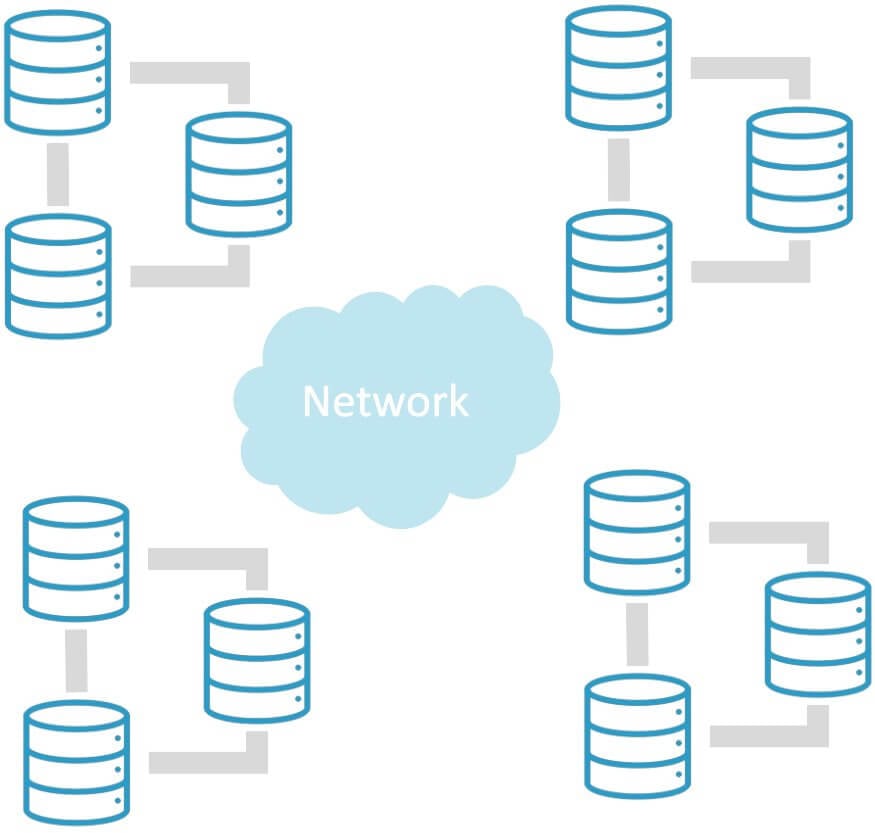Distributed Database
CrateDB is a distributed SQL database designed to deliver real-time analytics at any scale. It combines the familiarity of SQL with a powerful, shared-nothing architecture, distributing data, queries, and workloads seamlessly across all nodes in your cluster.
The result:
- Massive horizontal scalability
- Built-in high availability
- Fault tolerance with zero downtime
- Instant insight across any data type

Built for modern data demands
Traditional databases were never designed for today’s scale, meaning billions of events, streaming data, diverse formats, and real-time decision-making.
CrateDB’s distributed architecture breaks through these limits by spreading both data and query execution across multiple nodes. Each node works independently, processing its share of the workload in parallel.
- Linear scalability: Add nodes to handle more data or queries instantly.
- High throughput: Ingest millions of events per second with consistent performance.
- Distributed execution: Queries are automatically parallelized across all nodes for millisecond-level results.
- Resilient by design: Built-in replication and failover ensure continuous availability.

How CrateDB distributes work
- Data sharding: Tables are automatically partitioned into shards distributed across nodes.
- Replication: Each shard is replicated to multiple nodes to prevent data loss.
- Query distribution: The distributed SQL engine sends query tasks to the nodes holding relevant data.
- Parallel processing: Each node processes its part locally and returns intermediate results.
- Result aggregation: The handler node merges results and returns the final output in milliseconds.
- Everything happens automatically: no manual sharding, no complex clustering setup, no downtime.

Multi-model and real-time
CrateDB’s distributed engine isn’t limited to relational data. It processes time series, text, JSON, geospatial, and vector data, all in real time.
Whether you’re monitoring sensors, searching documents, or serving AI models, CrateDB delivers the same speed, scale, and simplicity across every data type.

Enterprise-grade reliability
- Automatic failover: Continuous operation, even if nodes fail.
- Self-healing clusters: Nodes rejoin and resynchronize automatically.
- Rolling upgrades: Apply maintenance without downtime.
- Multi-zone deployments: Distribute nodes across regions for resilience.
These capabilities make CrateDB a natural fit for mission-critical analytics, IoT platforms, and AI-driven applications.

CrateDB architecture guide
This comprehensive guide covers all the key concepts you need to know about CrateDB's architecture. It will help you gain a deeper understanding of what makes it performant, scalable, flexible and easy to use. Armed with this knowledge, you will be better equipped to make informed decisions about when to leverage CrateDB for your data projects.
